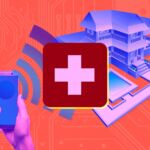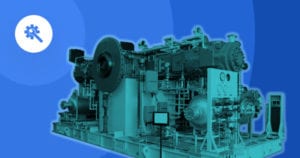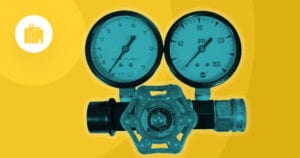
The world of education is currently undergoing drastic changes due to the rise of IoT and related technologies. The teacher’s role is becoming more consultative, the classroom is getting more autonomy, and students are getting more interested in self-directed, self-paced learning. In this article, we will consider examples of IoT in education and discuss their roles in education. Let’s get started!
Pen Scanners by C-PEN
Pen scanner is a product that leverages patented camera technology and in-system Optical Character Recognition (OCR) software to capture and process printed text. Pen scanners of different brands come with different sets of features. For instance, C-PEN offers a reading pen that reads the text aloud, defines the meaning of the highlighted words, stores scanned text, and has a voice memo function. This pen makes it simple for students of any level to work with printed learning materials.
C-PEN brand also designed a translator pen that translates and pronounces words based on nine OXFORD Academic and English Language Teaching (ELT) dictionaries. This smart device helps international students, including non-native English speakers, to do researchers more effectively and understand new topics faster.
Smart Cards by Magicard
Engineers of Magicard designed a comprehensive all-in-one IoT solution that takes the security and effectiveness of classrooms to the next level. Magicard created physical cards that can be used as:
- Physical access cards: Each issued card comes with unique keys that provide access to campuses, faculties, and individual classrooms
- Time and attendance cards: The use of smart cards allows educators to verify whether students are in the right class at the right time while also help them monitor absence and sickness
- Logical access cards: By adding a logical access application to a student card, schools can track whether students use e-learning resources and whether they submit essays and other assignments on time
- Loyalty and membership cards: Students can use smart cards to visit libraries, sports clubs, and other facilities on campus
- Payment cards: Students can use smart cards to pay for printing and photocopying, public transportation, etc.
- Data cards: The chip on a multi-application student smart card can be used to store personal and medical information like emergency contacts, a blood group, allergies, etc.
Educational institutions can buy high-volume card printers and produce as many new smart cards as necessary. Using Magicard, they can transform their entire system and create an ultimate learning experience for students.
LocoDrone and LocoWear by LocoRobo
LocoRobo provides IoT solutions that help school children learn visual coding, Python coding, and Java coding:
- LocoDrone is a device that allows learners to explore real-world coding and robotics through modern aerial technology. By using LocoDrone, children can get familiar with sensor data analysis and develop data visualization skills.
- LocoWear is a wearable device that can be strapped anywhere on the body to collect motion data. Using LocoWear, educators can immerse students in project-based learning and multi-disciplinary lessons in programming, anatomical motion physics, statistics, and data analysis.
Products created by LocoRobo address two key problems of modern IoT in education: lack of students’ interest in learning and lack of practical knowledge. These products drive curiosity and engage learners in the classroom. The use of IoT devices helps students understand why they should study what they study and give them ideas of how they can transfer their knowledge from theory to practice.
Document Camera by IPEVO
Due to the shift to remote teaching, educators faced many challenges. They lost access to traditional pedagogical tools like whiteboards, physical learning materials, and projectors.
IPEVO was one of the first companies that came up with a solution. This brand designed a document camera – an affordable and versatile teaching tool. The camera is compatible with all popular educational platforms, including Seesaw, Google Classroom, Camtasia, OBS, and FlipGrid.
Teachers can wirelessly connect the camera to their computers, tablets, or even smartphones. They can use Visualizer software (software designed by IPEVO) to control the document camera features (V4K’s auto-focus and zoom functions), make recordings, and integrate seamlessly with other apps platforms. The Document camera comes in handy when teachers need to write down math formulas, explain complex calculations, or demonstrate how to edit files and images.
Interactive Whiteboards
Modern students prefer to learn interactively, and many tech companies strive to address this need by adding IoT in education. They design new IoT technologies to implement interactive learning in the classroom.
For instance, Vibe created an interactive whiteboard that integrates with most educational apps and can be used for both: on-site classes and online teaching. This whiteboard works perfectly for collaboration purposes. It allows students to work through problems, ideas, and exercises on the board, with no additional boards required.
VR Headsets
Virtual Reality (VR) devices are exactly what educators need to spark engagement and promote curiosity.
VR technologies are the perfect solution for interactive and immersive learning. Using VR headsets, students can explore three-dimensional objects and environments, visit new places, travel through history, and enjoy many other activities that they can’t try out in real life.
For instance, students who learn the history of Rome can discover Rome’s archaeological park with a VR headset. They can virtually visit the Colosseum and walk through the Roman Forum and Palatine Hill.
It’s worth mentioning that VR headsets can also significantly benefit students who live in rural areas. Since students don’t have an opportunity to visit museums, zoos, and historical sites, they can gain some extra knowledge with the help of virtual experiences.
Wrapping Up
Today, the IoT in education plays an important role in shaping the industry. IoT devices help educators to improve collaboration, increase engagement, and enhance distance learning. Besides, new technologies benefit students with disabilities as well as learners who live in rural areas.
We can expect that development of IoT in education will have an even more significant impact in coming years. Let’s wait and see what new IoT trends will emerge next.




 Related Podcast Episode
Related Podcast Episode




 Related Applications
Related Applications


 Latest IoT News
Latest IoT News







